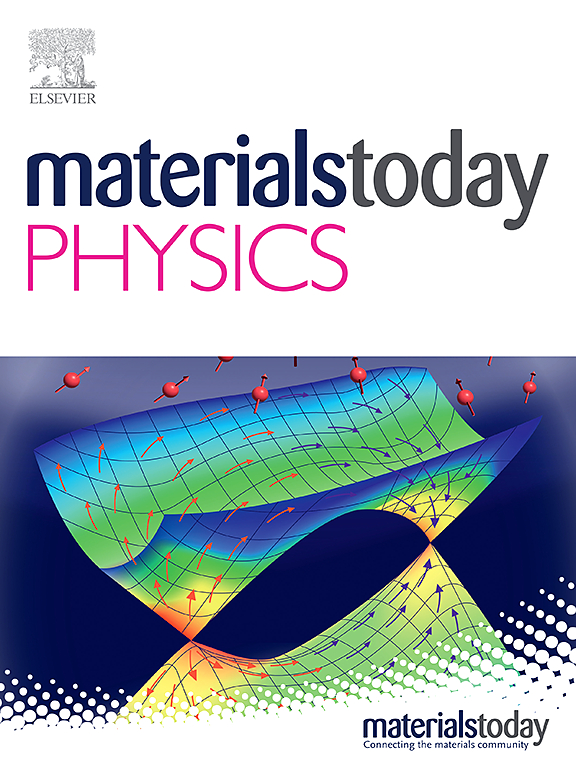Boosted ion switching at the electrode-electrolyte interfaces of architecture interdigitated flexible supercapacitors
IF 10
2区 材料科学
Q1 MATERIALS SCIENCE, MULTIDISCIPLINARY
引用次数: 0
Abstract
The pillar-array interdigitated solid-state super cap-electronics (PISSC) is a cutting-edge energy storage device with a narrow gap between isolated electrode channels, allowing for faster ionic switching and lower ionic resistance. Notably, we fabricated a symmetric supercapacitor (SnS2‖PVA-LiClO4‖SnS2) using electron beam evaporation and employed physical vapor deposition (PVD) to construct thin, flexible electrodes in both pillar-array interdigitated (PISSC) and stacked (SSSC) configurations. Electrochemical performance and kinetic characteristics were evaluated for each configuration. At a scan rate of 5 mV s−1, the PISSC showed notable pseudo-capacitive behavior with a superior volumetric capacitance (CVol) of 1410.5 F cm−3. We examined the switching mechanisms and kinetics under different conditions, such as OFF, ON, and VD-states, which resulted in the quantification of AC conductivity (σAC), diffusion coefficient (D0), electron transfer rate (k0), carrier mobility (μC) and carrier density (nC). The PISSC outperformed the SSSC with an AC ionic conductivity of 1.53 × 10−3 S cm1, diffusion coefficient of 1.8 × 10−10 cm2 s−1 and carrier mobility of 146 cm2 V−1 s−1, demonstrated by the operation of red LEDs connected to a 4V circuit. Additionally, the PISSC sustained excellent performance even when bent from 0 to 180°, highlighting its potential for flexible electronic applications.
结构交叉式柔性超级电容器电极-电解质界面上的增强离子开关
柱阵交叉指状固态超级电容电子器件(PISSC)是一种尖端的储能器件,在隔离电极通道之间具有狭窄的间隙,允许更快的离子开关和更低的离子电阻。值得注意的是,我们利用电子束蒸发制造了一个对称超级电容器(SnS2‖PVA-LiClO4‖SnS2),并采用物理气相沉积(PVD)以柱阵列交叉(PISSC)和堆叠(SSSC)配置构建了薄的柔性电极。对每种构型的电化学性能和动力学特性进行了评价。在5 mV s-1的扫描速率下,PISSC表现出明显的伪电容行为,其体积电容(CVol)达到1410.5 F cm-3。研究了不同状态下(OFF、ON和vd)的开关机制和动力学,量化了导电率(σAC)、扩散系数(D0)、电子传递速率(k0)、载流子迁移率(μC)和载流子密度(nC)。PISSC的交流离子电导率为1.53 × 10-3 cm2 S -1,扩散系数为1.8 × 10-10 cm2 S -1,载流子迁移率为146 cm2 V-1 S -1,优于SSSC。此外,PISSC即使在从0到180度弯曲时也能保持优异的性能,突出了其在柔性电子应用中的潜力。
本文章由计算机程序翻译,如有差异,请以英文原文为准。
求助全文
约1分钟内获得全文
求助全文
来源期刊

Materials Today Physics
Materials Science-General Materials Science
CiteScore
14.00
自引率
7.80%
发文量
284
审稿时长
15 days
期刊介绍:
Materials Today Physics is a multi-disciplinary journal focused on the physics of materials, encompassing both the physical properties and materials synthesis. Operating at the interface of physics and materials science, this journal covers one of the largest and most dynamic fields within physical science. The forefront research in materials physics is driving advancements in new materials, uncovering new physics, and fostering novel applications at an unprecedented pace.
 求助内容:
求助内容: 应助结果提醒方式:
应助结果提醒方式:


